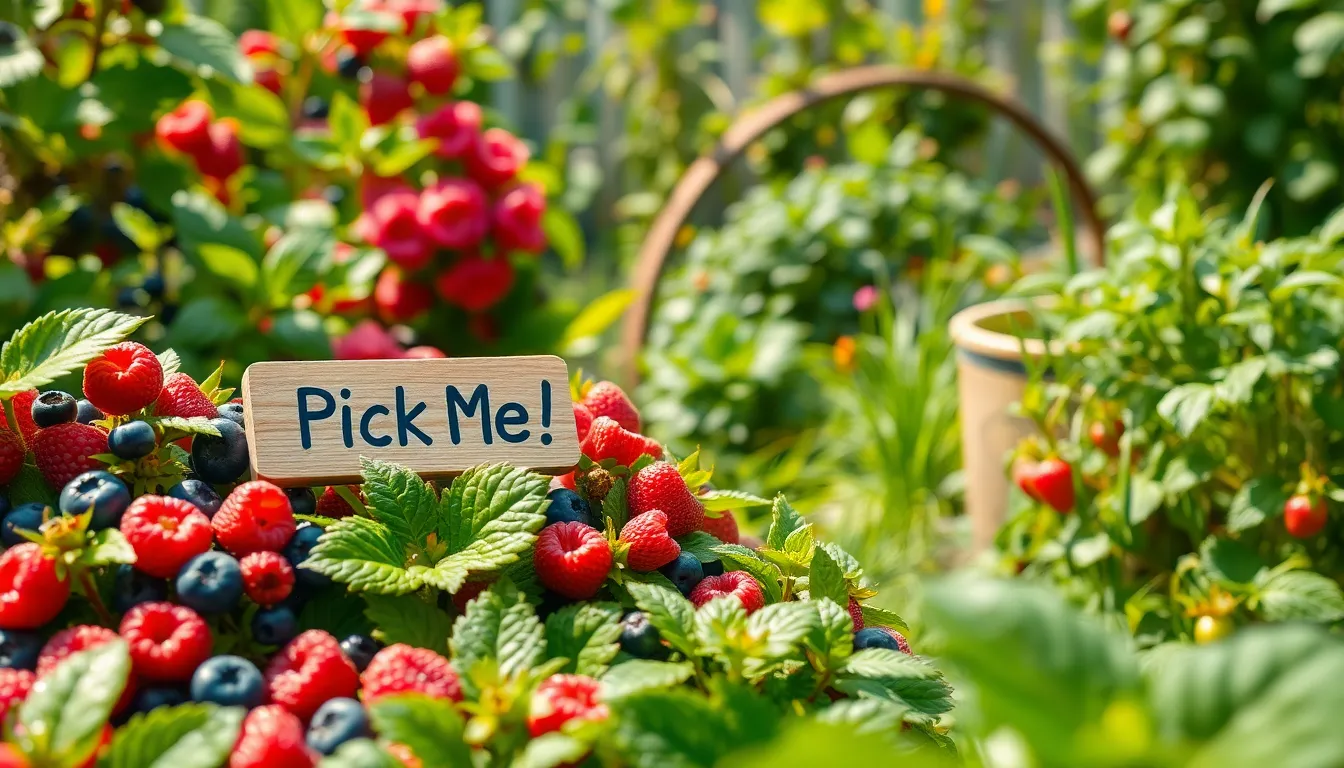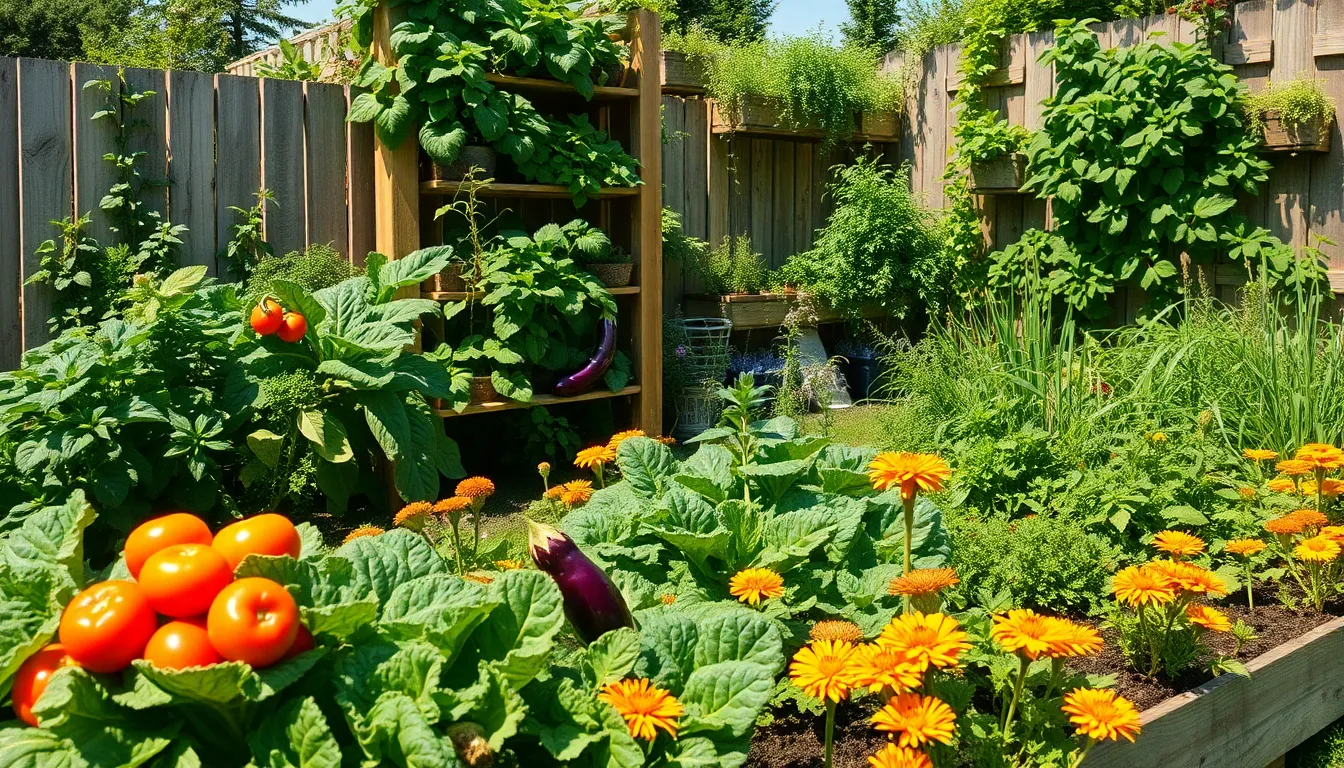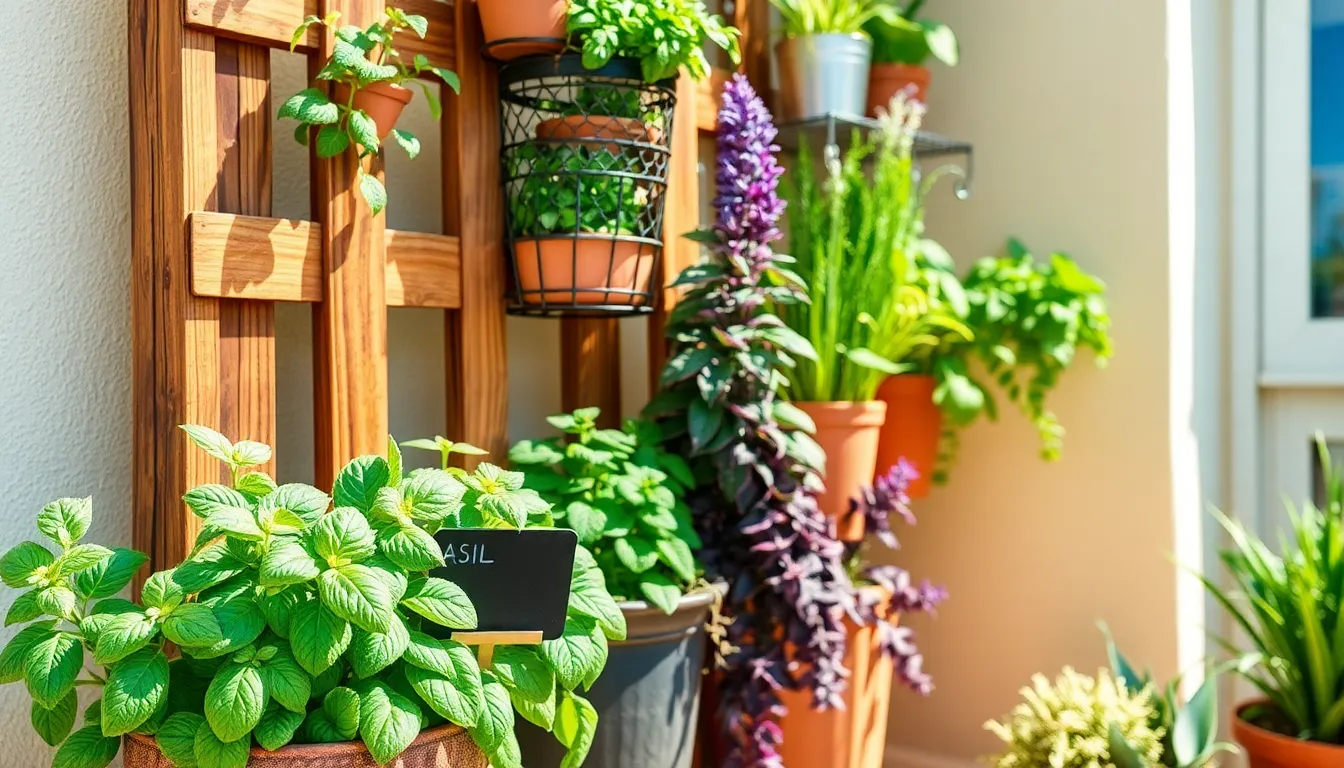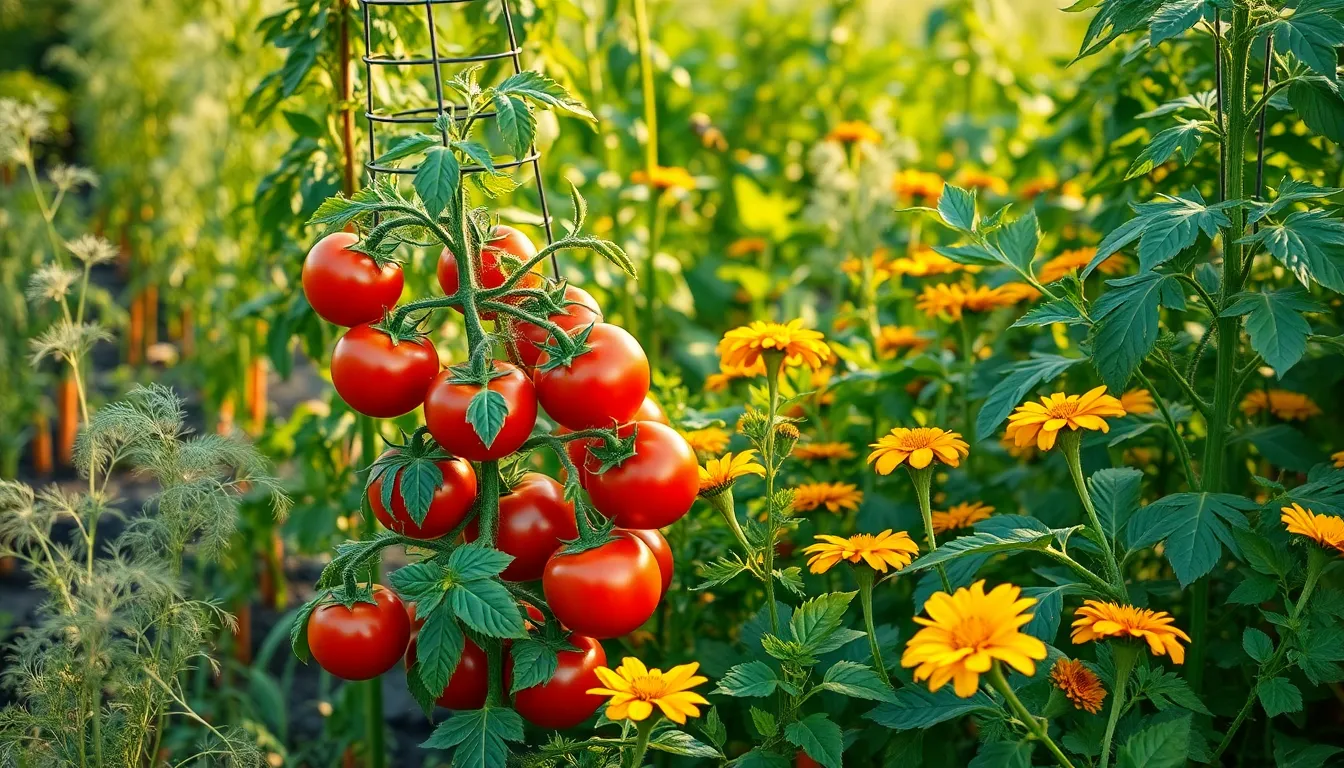Imagine stepping into your garden and plucking a sun-ripened strawberry, its sweetness unmatched by anything store-bought. For both the novice and the seasoned gardener, cultivating a fruit garden is not just about growing plants; it’s about creating a sanctuary that nourishes both body and soul. In the world of gardening, few experiences are as rewarding as nurturing a tiny seedling into a fruit-bearing treasure.
The art of fruit gardening is a journey filled with discovery and delight, offering endless possibilities to suit any space or skill level. Whether you’re dreaming of a compact container garden on your balcony or envisioning a sprawling orchard, there’s something deeply satisfying about harvesting your own fruit. This article will guide you through 15 inspiring fruit garden ideas, each designed to spark creativity and cultivate joy.
Expect to uncover practical tips for optimizing your garden space, regardless of how much or how little you have to work with. From selecting the best fruit varieties for your climate to innovative ways to incorporate fruit plants into existing landscapes, these inspirations are crafted to bolster your confidence and enrich your gardening practice. So, whether you’re just starting out or looking to elevate your existing garden, these ideas will empower you to turn your fruit garden dreams into reality.
Choosing Your Fruit Garden Theme
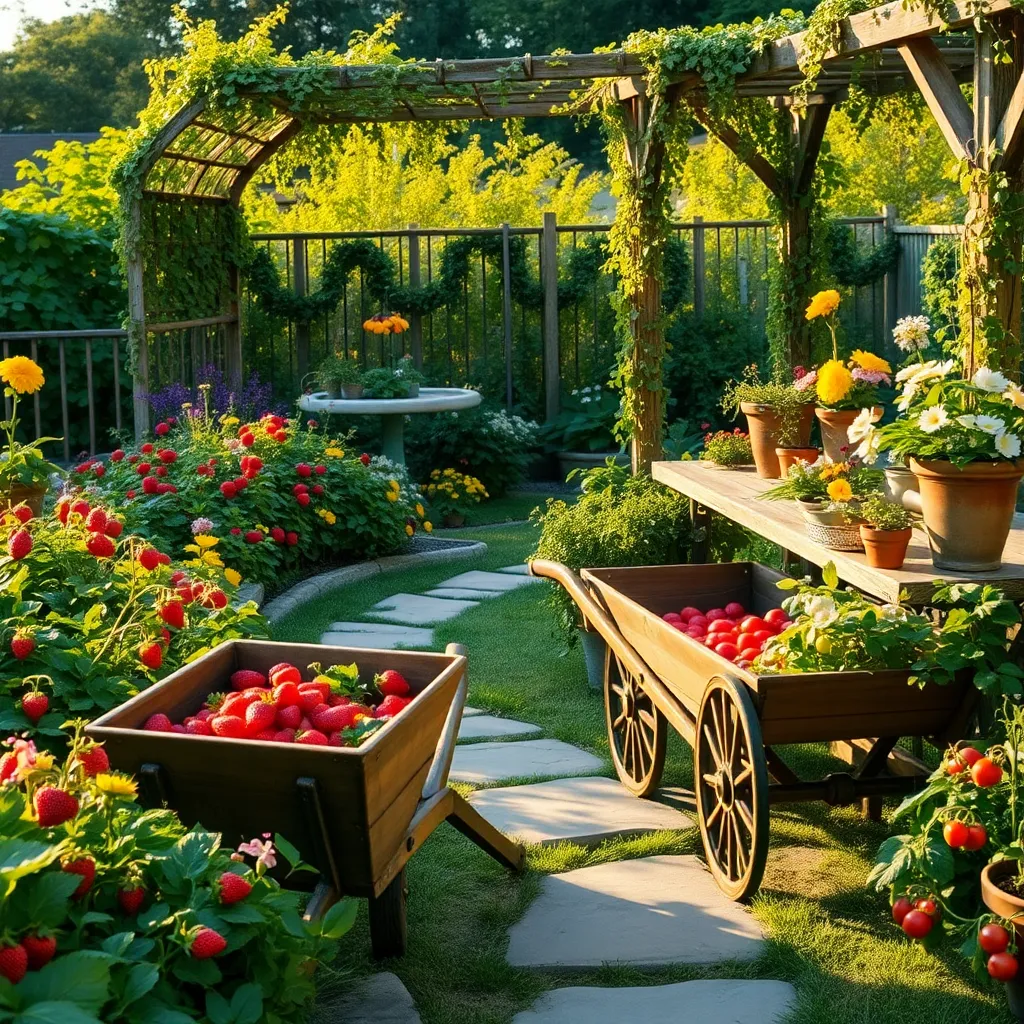
Choosing a theme for your fruit garden can transform your outdoor space into a cohesive paradise. Consider themes like a Mediterranean grove or a tropical oasis to guide your plant choices and layout.
For a Mediterranean theme, focus on fruits such as figs, pomegranates, and olives, which thrive in well-draining, sandy soils. These plants require full sun and moderate watering, making them ideal for drier climates.
If you’re inclined towards a tropical theme, look into planting bananas, papayas, and pineapples. These fruits need rich, loamy soil and regular watering to mimic their native humid environments.
In both themes, using mulch can help retain soil moisture and suppress weeds, ensuring healthier plants. Advanced gardeners might experiment with companion planting, such as growing basil or marigolds, to naturally repel pests.
Ideal Fruit Varieties for Beginners
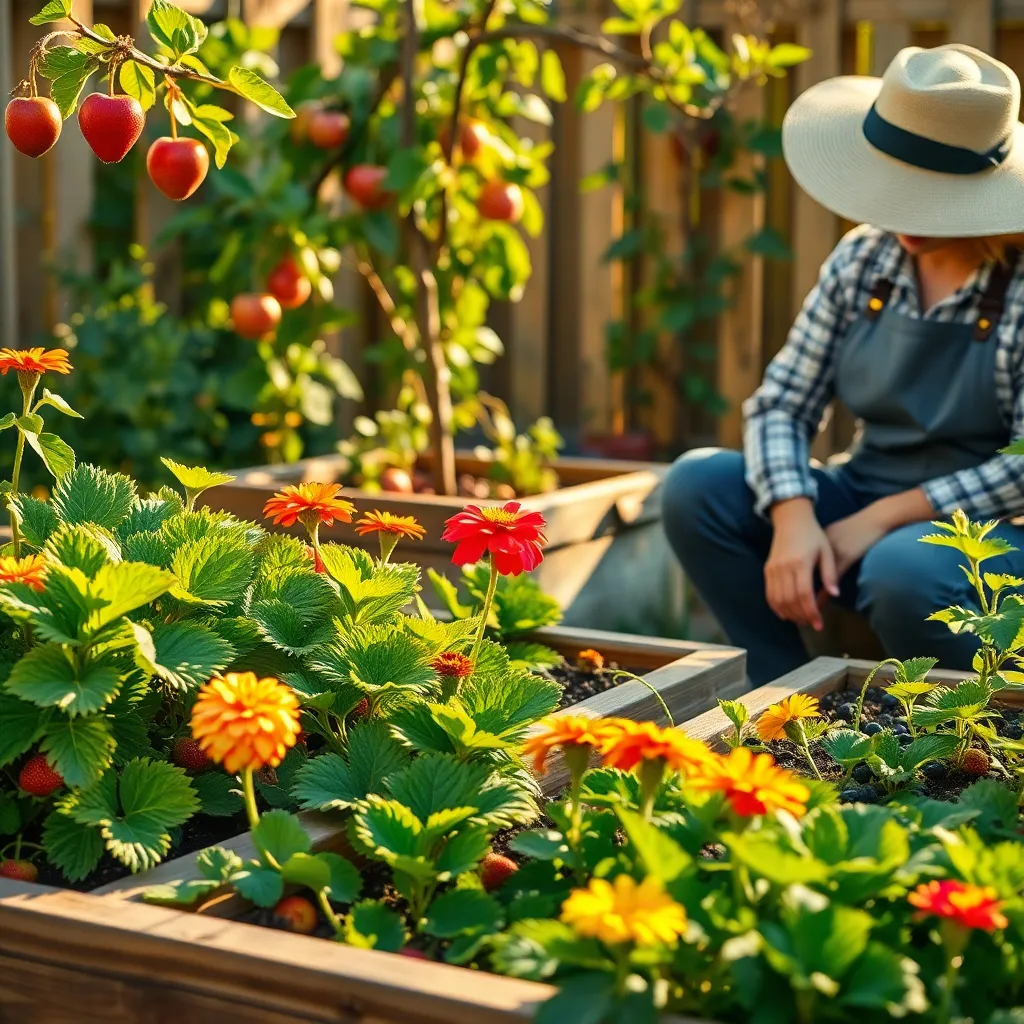
Starting a fruit garden can be an exciting venture, especially if you choose varieties that are easy to grow. For beginners, it’s essential to select fruits that require minimal maintenance yet provide bountiful harvests.
Strawberries are a perfect choice for novice gardeners due to their adaptability and ease of care. They thrive in well-draining soil and need about one inch of water per week, making them ideal for those new to consistent watering schedules.
Another excellent option is the blueberry bush, which not only produces delicious fruit but also adds visual interest with its foliage. Plant blueberries in acidic soil with a pH of 4.5 to 5.5 and ensure they receive full sun for the best yield.
Consider growing raspberries for their robust growth habit and resilience. These plants prefer rich, well-drained soil and will benefit from a layer of mulch to retain moisture and suppress weeds.
For those who wish to try their hand at something slightly more advanced, the dwarf apple tree offers a manageable size and abundant fruiting. Ensure your apple tree is planted in a sunny location with fertile, well-draining soil, and prune it annually to encourage healthy growth.
Designing a Space-Saving Orchard
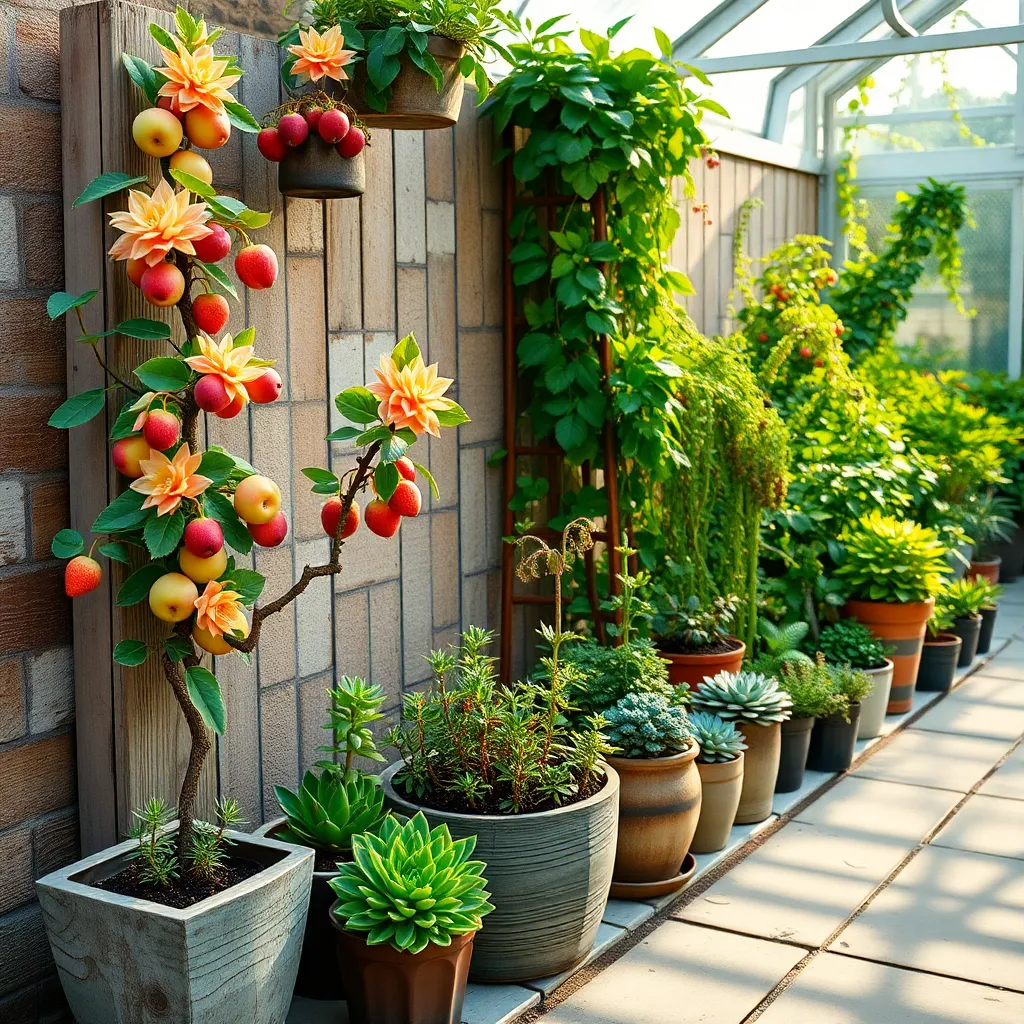
Transforming a small space into an orchard requires a bit of creativity and strategic planning. One practical method is to opt for dwarf or semi-dwarf fruit trees, which are ideal for limited spaces and can produce an abundance of fruit without requiring much room.
Layering your orchard is another effective technique to maximize space. By planting smaller fruit bushes or ground covers like strawberries beneath your trees, you’ll create a multi-tiered garden that uses vertical space efficiently.
Consider the use of espalier techniques to train trees against walls or fences, saving ground space while still allowing for excellent fruit production. This method not only enhances sunlight exposure but also adds a decorative element to your garden, making it both productive and visually appealing.
For beginners, starting with easy-to-manage fruit trees such as apples, pears, or plums is recommended, as they are resilient and adaptable to various climates. Use well-draining soil with a neutral pH, and ensure consistent watering—about once a week—to maintain healthy growth.
Advanced gardeners might explore grafting techniques to grow multiple varieties on a single tree, thereby increasing diversity without needing extra space. Regular pruning and thinning will help manage growth and improve air circulation, ensuring your space-saving orchard thrives.
Creating a Pollinator-Friendly Environment
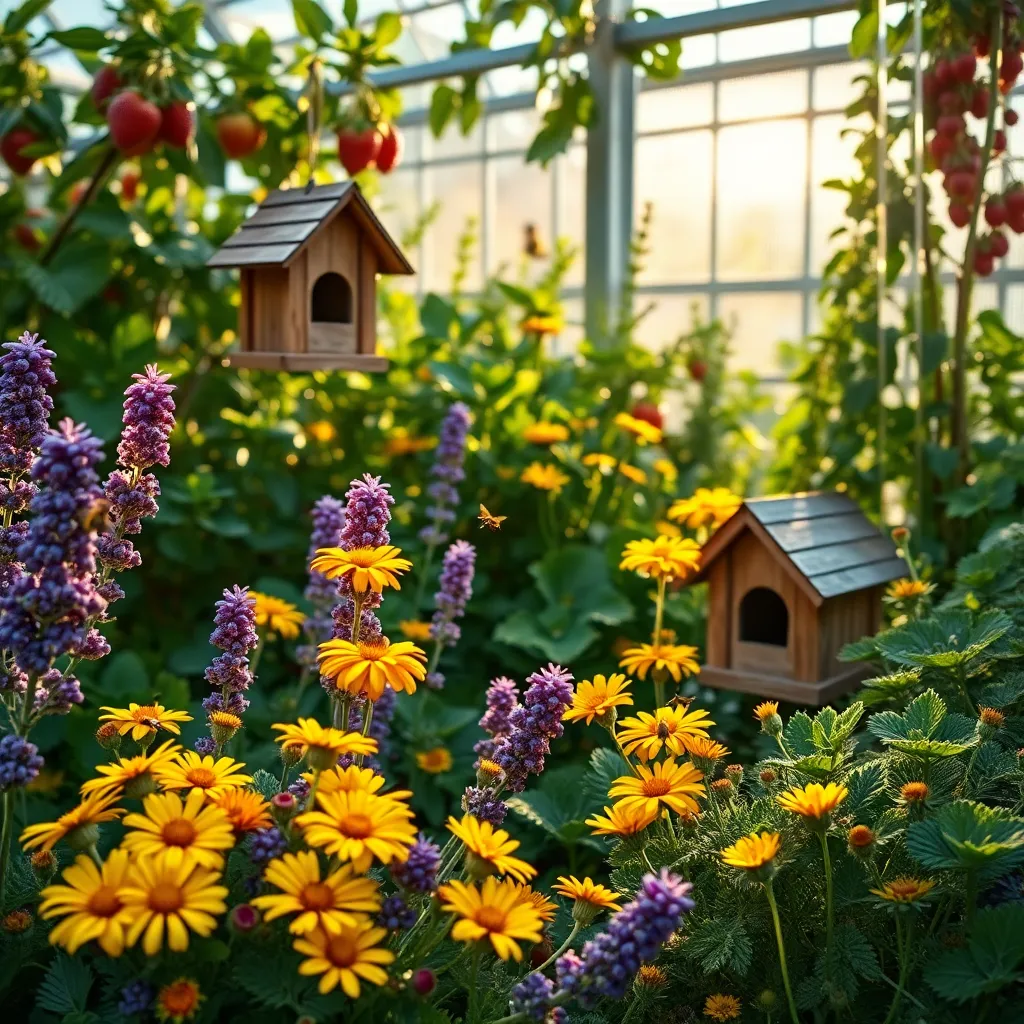
Creating a pollinator-friendly environment in your fruit garden is an excellent way to boost fruit production naturally. Pollinators like bees, butterflies, and birds play a crucial role in the fertilization process, leading to more abundant and healthier fruit yields.
To attract these helpful creatures, consider planting a variety of native flowering plants around your fruit trees. Choose species that bloom at different times throughout the growing season to provide a continuous source of nectar and pollen.
In addition to plants, consider providing other resources such as water and shelter. A simple birdbath or a shallow dish of water with a few stones can attract thirsty pollinators, while a small pile of brush or a bee hotel can offer them a safe place to rest.
Minimizing pesticide use is also crucial, as many chemicals can be harmful to pollinators. Instead, opt for organic pest control methods like introducing beneficial insects or using natural sprays made from materials like neem oil.
Companion Planting with Fruit Trees
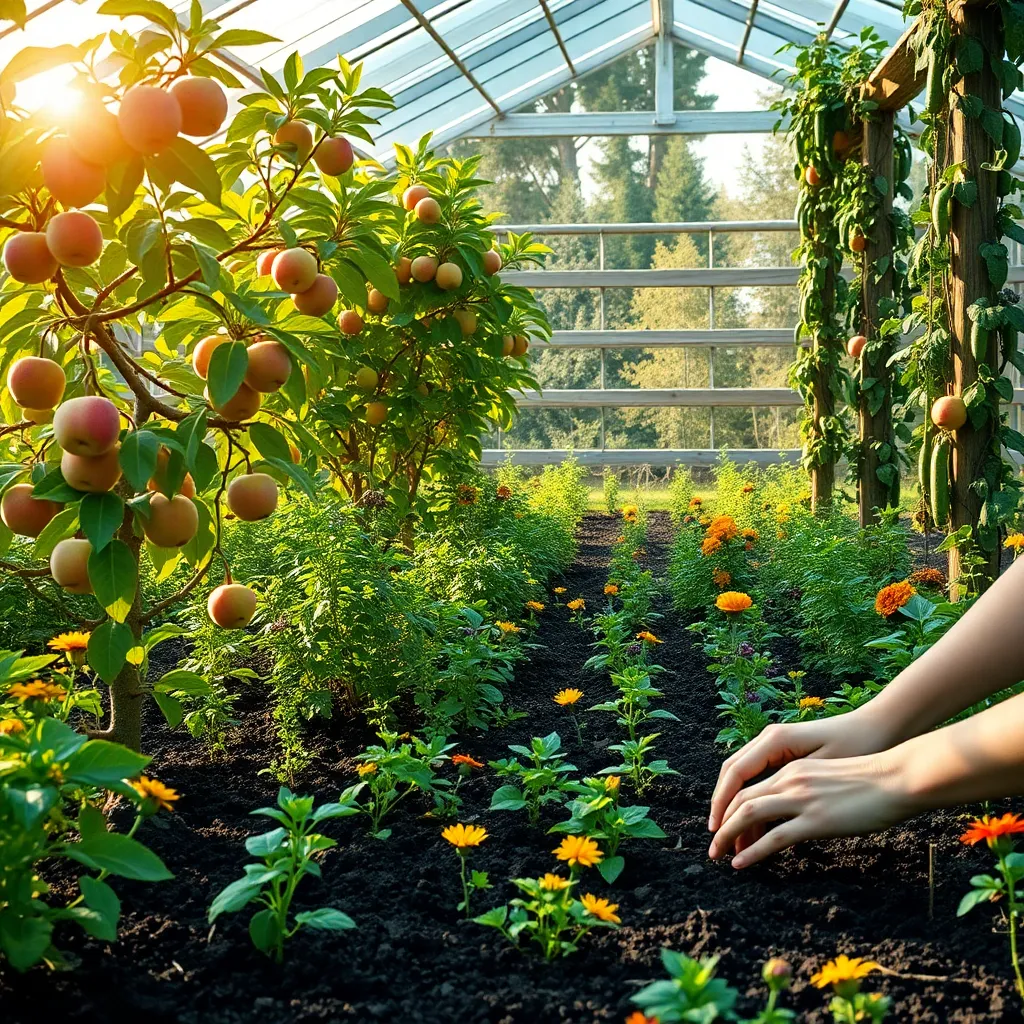
Companion planting with fruit trees can enhance your garden’s productivity and overall health. By strategically planting certain species together, you can create a more resilient ecosystem that benefits all plants involved.
Adding herbs like chives and garlic beneath fruit trees can help deter pests while also enhancing the flavor of your fruits. These plants release natural insect-repelling compounds, making them perfect companions for apple and pear trees.
Consider planting comfrey around the base of your fruit trees to improve soil health. Comfrey’s deep roots draw nutrients from the subsoil, providing a natural fertilizer when its leaves decompose.
For those ready to explore advanced techniques, interplanting with nitrogen-fixing plants like clover or lupine can significantly boost soil fertility. These plants enrich the soil with nitrogen, a crucial nutrient for fruit tree growth.
Seasonal Fruit Garden Planning
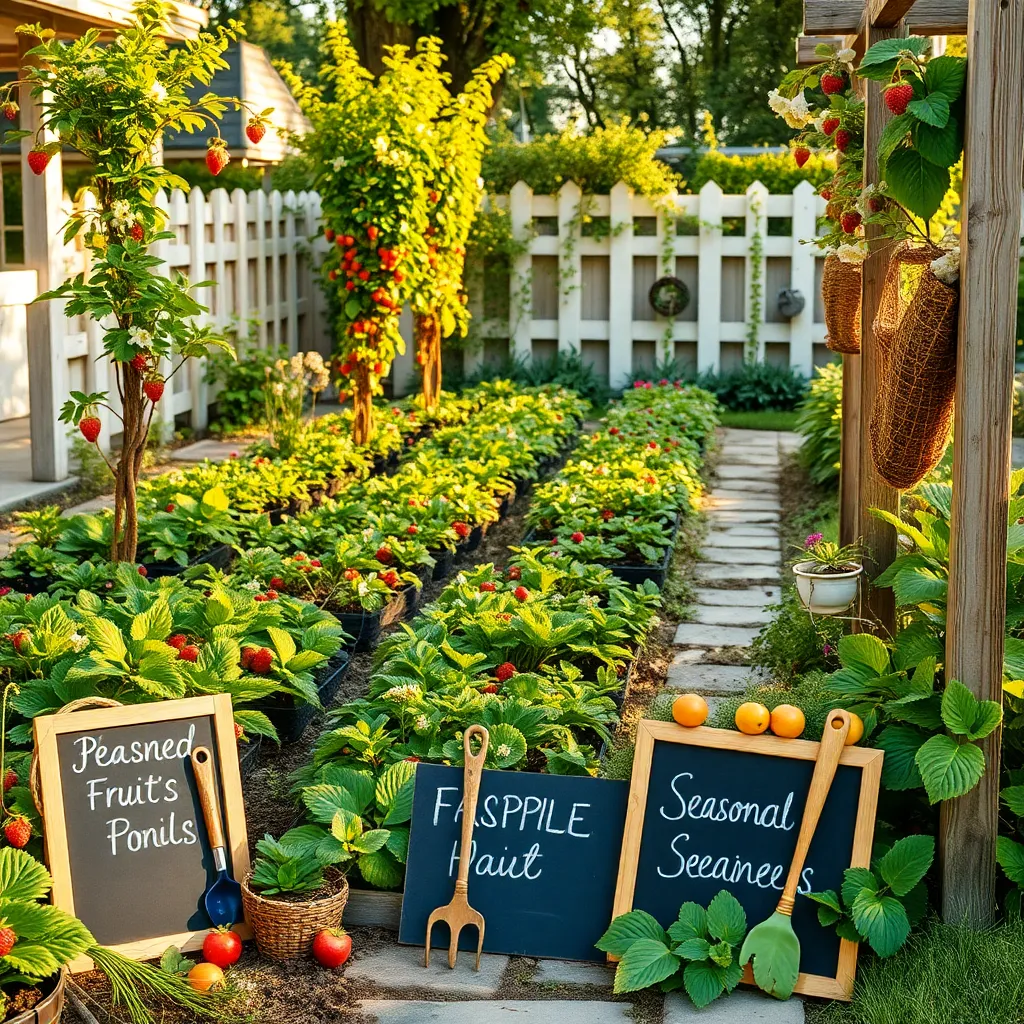
Planning a seasonal fruit garden involves understanding the unique growing cycles of different fruits. To ensure a bountiful harvest, it’s crucial to select plants that thrive in your local climate and soil conditions.
Begin by researching which fruits are naturally suited to your region’s growing season. Consider planting early, mid, and late-season varieties to extend your harvest period and enjoy fresh fruit for longer durations.
Soil preparation is key to successful fruit gardening. Most fruits prefer well-drained soil rich in organic matter, so consider adding compost or aged manure to enhance soil quality.
Watering needs vary greatly between different types of fruit plants. While strawberries may require consistent moisture, drought-tolerant plants like figs need less frequent watering; adjust your irrigation practices accordingly.
For those looking to optimize their garden’s productivity, consider advanced techniques like succession planting. This involves planting small batches of fruit plants in intervals to ensure a continuous harvest rather than one overwhelming yield.
Regular maintenance, such as pruning and pest control, is vital for keeping your fruit garden healthy. Prune fruit trees in late winter or early spring to promote healthy growth and prevent diseases.
Maximizing Yield with Vertical Gardening
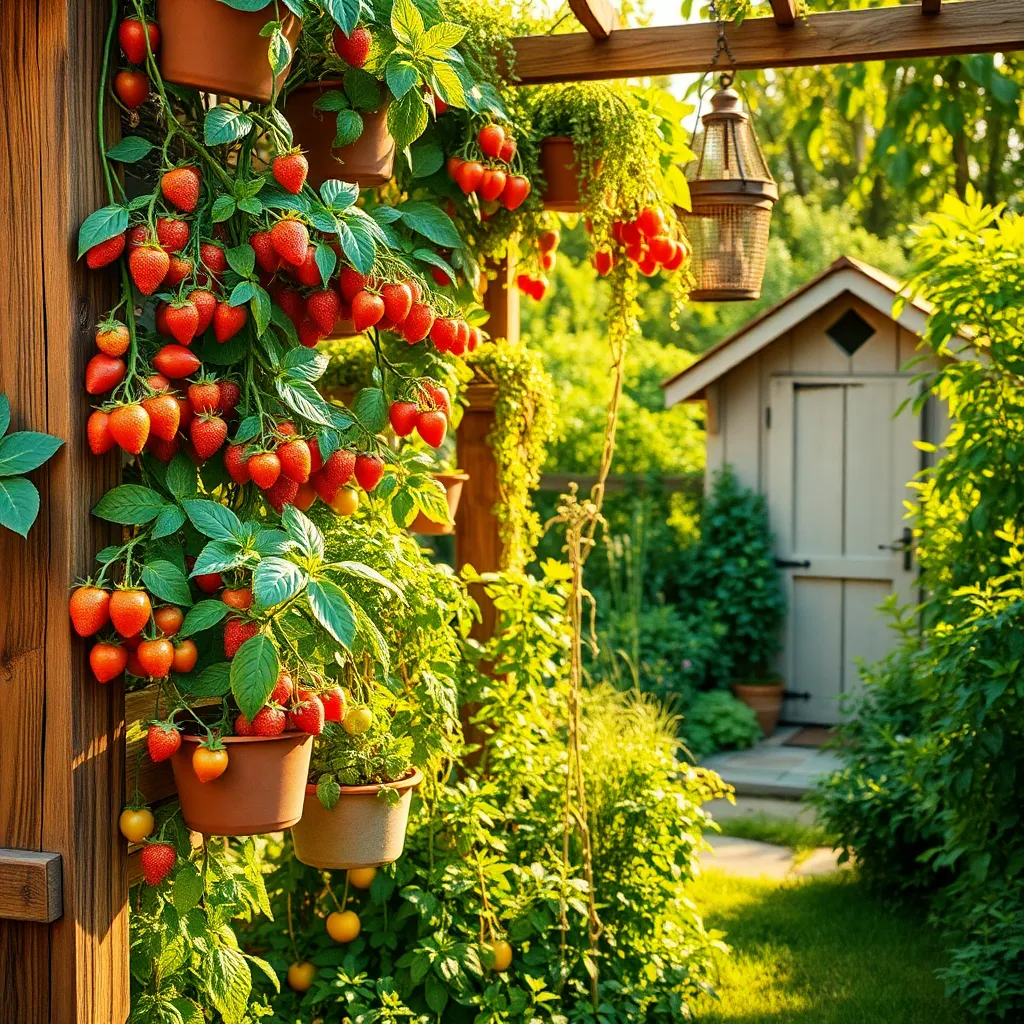
Vertical gardening provides a fantastic way to maximize yield, especially in small spaces. By growing fruits vertically, gardeners can make use of vertical space, which is often underutilized in traditional gardens.
For beginners, starting with climbing plants like strawberries or raspberries can be a great choice, as these plants naturally reach upwards. Ensure you have a sturdy trellis or support system in place, as it is crucial for healthy growth and abundant fruit production.
Use a high-quality potting mix with good drainage to prevent root rot, which is a common issue when plants are confined to smaller soil volumes. Watering should be consistent, but be careful not to overwater; a drip irrigation system can help maintain optimal moisture levels.
Advanced gardeners can experiment with espalier techniques, which involve training fruit trees to grow flat against a wall or fence. This not only saves space but also allows for better sunlight exposure and easier harvesting.
To further increase yield, consider interplanting with companion plants that deter pests and improve pollination. For instance, planting marigolds at the base of your vertical structure can help keep harmful insects at bay.
Integrating Edible Landscapes
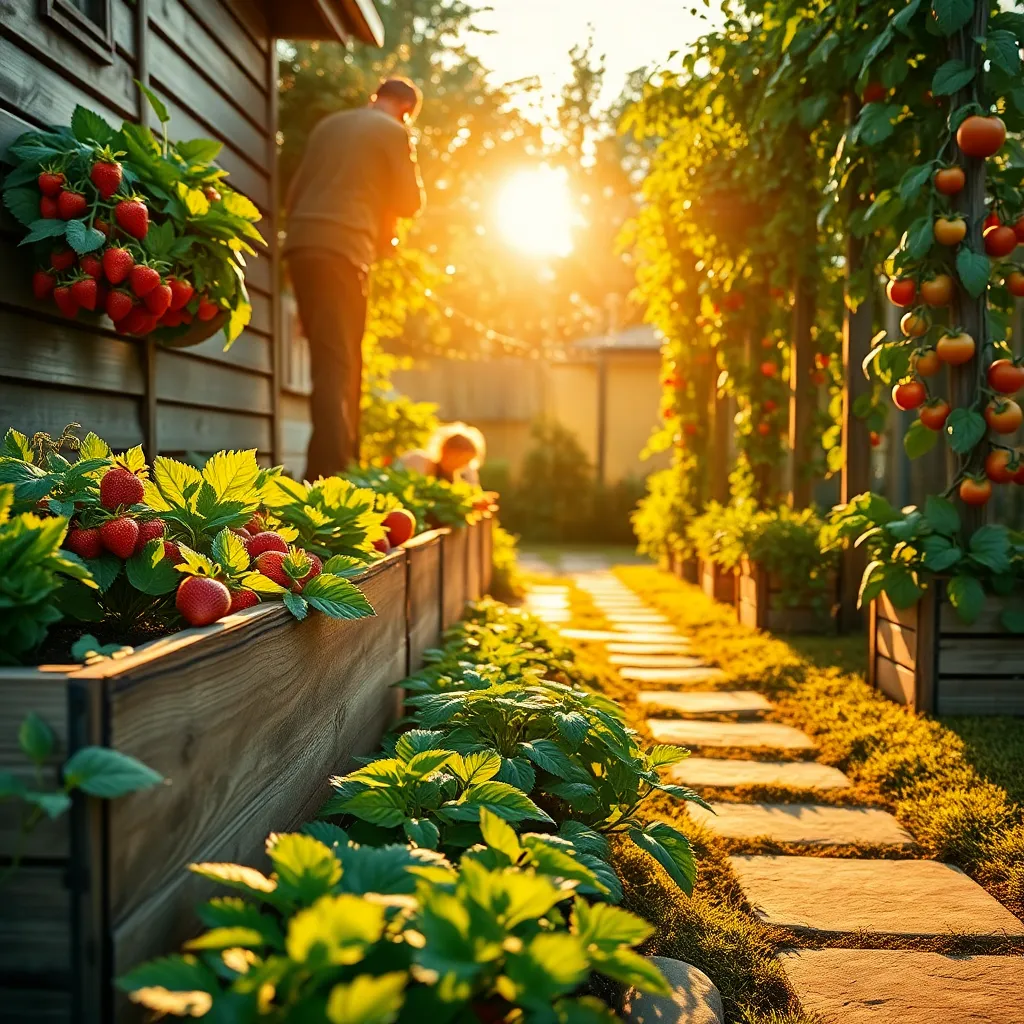
Transforming your garden into an edible landscape allows you to enjoy both beauty and bounty. Begin by selecting plants that are both visually appealing and produce food, such as blueberries, which offer vibrant foliage and delicious fruit.
For those new to gardening, incorporating herbs like rosemary and basil can be a simple starting point. These herbs require well-drained soil and at least six hours of sunlight, making them perfect for sunny borders or container gardens.
Advanced gardeners might consider adding fruit trees like dwarf apple or cherry trees, which can serve as stunning focal points. Ensure these trees are planted in nutrient-rich soil and receive regular watering, especially during dry spells, to promote healthy growth.
Integrating companion planting techniques can enhance the productivity of your edible landscape. Pairing plants such as tomatoes with basil not only maximizes space but also naturally repels pests, reducing the need for chemical interventions.
Innovative Container Fruit Gardening
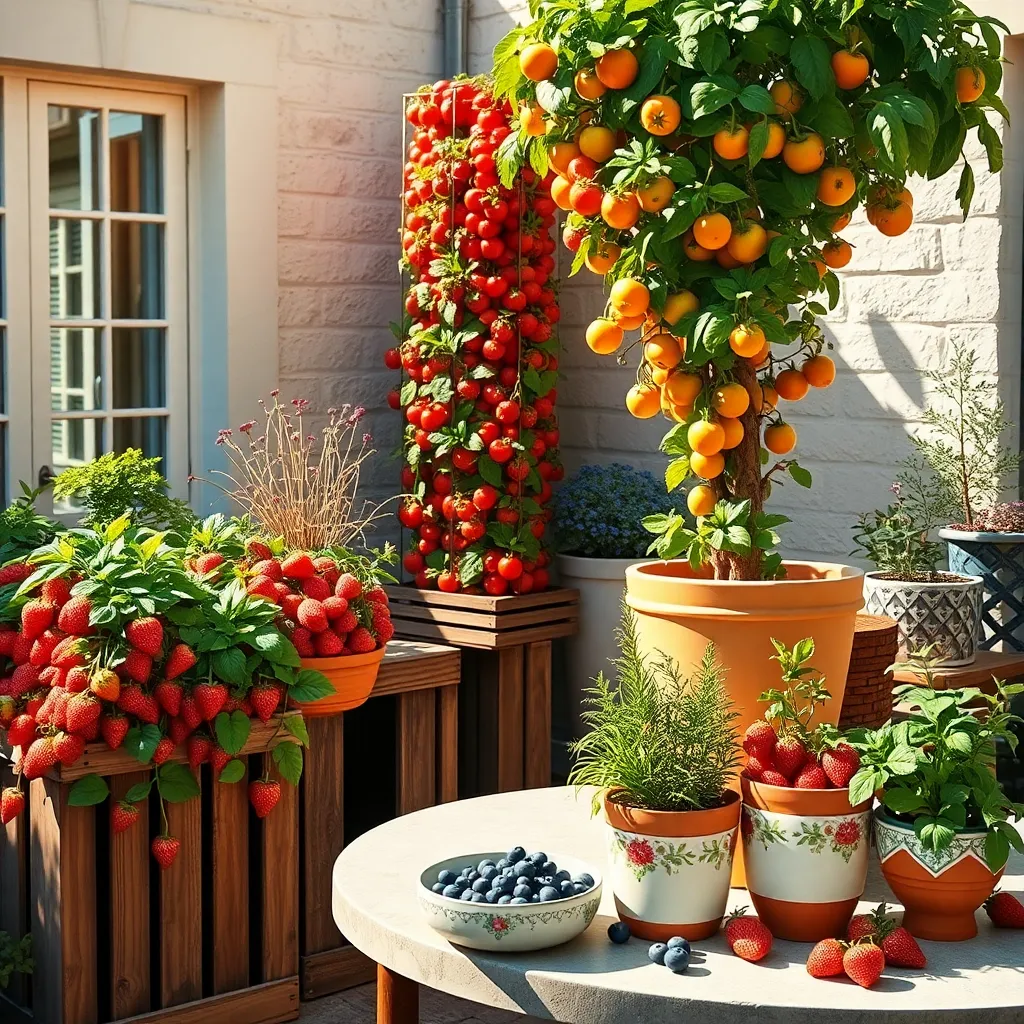
For those with limited space or who want to maximize their gardening areas, container fruit gardening offers a delightful solution. Choose dwarf or compact varieties of fruit trees and plants, as they are well-suited for container growth and can thrive in small spaces.
Ensure that your containers have adequate drainage holes to prevent waterlogging, a common issue in container gardening. Use a high-quality potting mix enriched with organic matter to provide the necessary nutrients and support healthy root development.
Provide consistent watering, as containers tend to dry out more quickly than garden beds. A good rule of thumb is to water until you see it draining from the bottom of the container, ensuring the entire root zone is hydrated.
For more experienced gardeners, consider employing techniques such as espalier to train fruit trees along trellises or walls, optimizing vertical space. Regular pruning will help maintain the desired shape and encourage fruit production, making it a rewarding endeavor for those willing to invest the time.
Sustainable Practices for Fruit Gardens
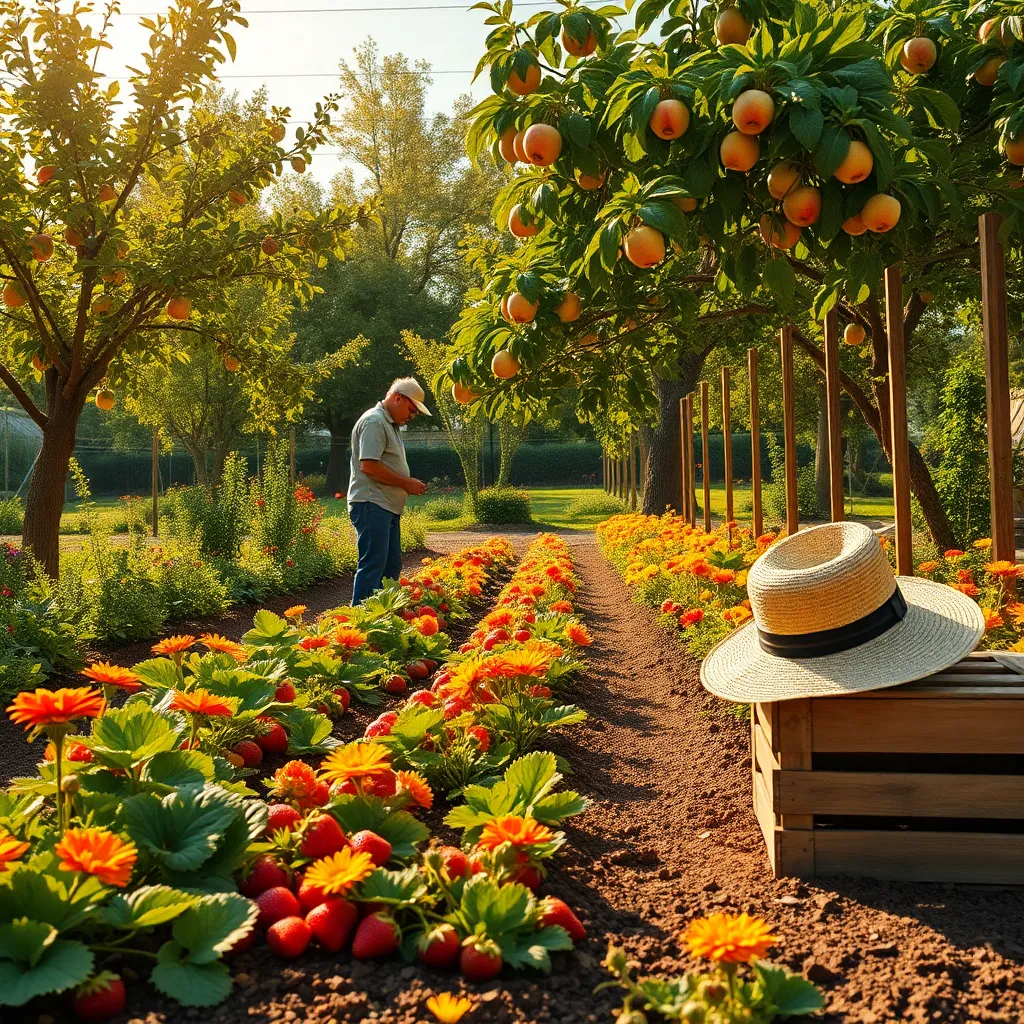
Implementing sustainable practices in your fruit garden not only benefits the environment but also enhances the health of your plants. Start by using organic mulch like straw or wood chips to maintain soil moisture and suppress weeds, which can reduce the need for frequent watering.
Consider incorporating companion planting to naturally deter pests and promote pollination. For instance, planting marigolds near your fruit trees can help repel nematodes and other soil pests, while herbs like basil can attract beneficial insects.
Water conservation is crucial for sustainable gardening, so opt for drip irrigation systems that deliver water directly to the plant roots. This method not only conserves water but also minimizes the risk of fungal diseases caused by wet foliage.
Soil health is foundational to sustainable fruit gardening; regularly add compost to enrich your soil with nutrients. Aim to test your soil annually to adjust amendments and ensure optimal pH levels for the specific fruit varieties you’re growing.
Techniques for Pruning and Training
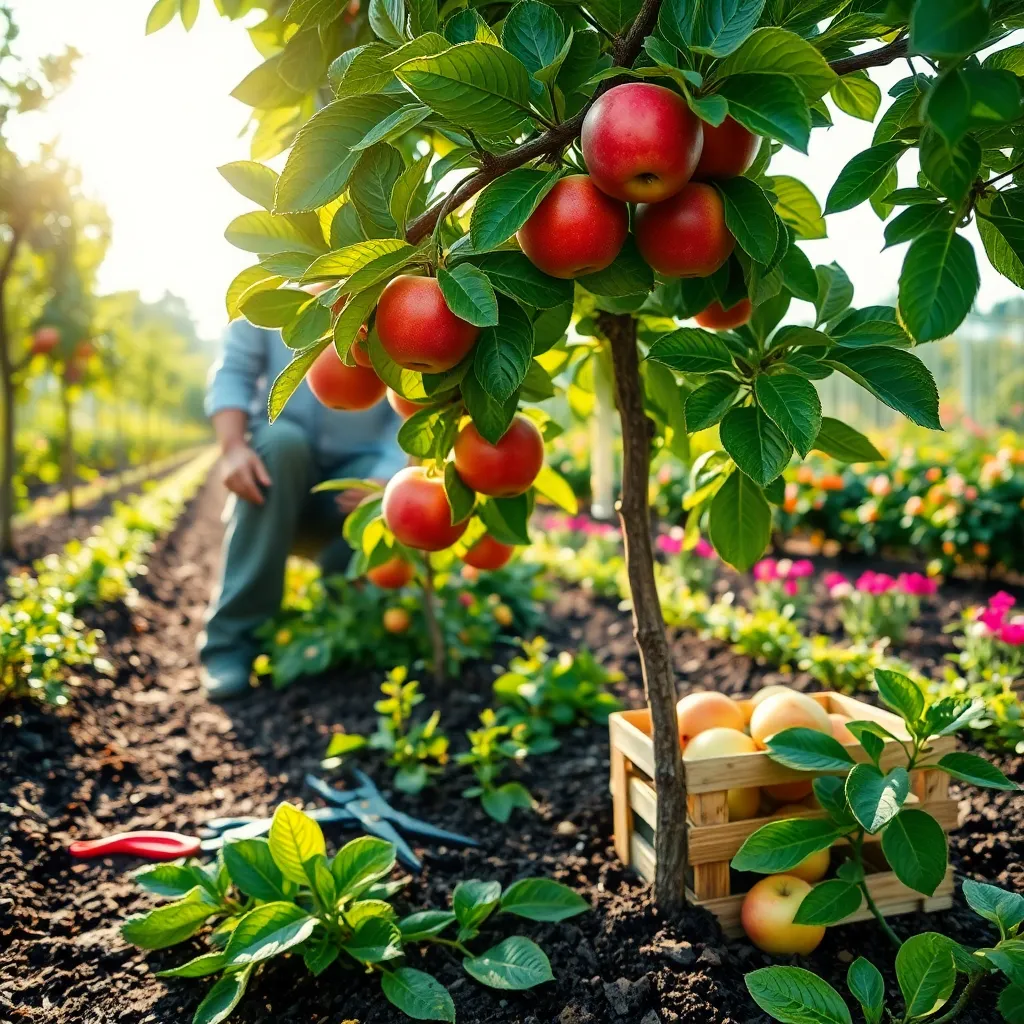
Pruning and training are essential techniques for maintaining healthy and productive fruit gardens. Begin by understanding the natural growth habits of your fruit trees or bushes, as this knowledge will guide your pruning decisions and help you predict how your plants will respond.
For beginners, it’s crucial to use clean, sharp tools to make precise cuts that heal quickly. Focus on removing dead, diseased, or crossing branches to improve air circulation and sunlight penetration, thereby reducing the risk of fungal diseases.
Advanced gardeners can employ more sophisticated techniques such as espalier, which involves training plants to grow flat against a support structure. This method is ideal for maximizing space in small gardens and can be used with apples, pears, and other fruit trees that adapt well to such training.
When pruning, timing is key—most fruit trees benefit from a late winter or early spring pruning when they are still dormant. However, summer pruning can be useful for controlling size and encouraging fruiting spurs, especially in vigorous growers like peach and plum trees.
Training young plants establishes a strong framework that supports abundant fruit production in later years. By directing growth with stakes, ties, or trellises, you can shape your plants to optimize their health and yield.
To enhance your pruning skills, consider practicing on different plant types to understand their specific responses. Remember, patience and consistency in applying these techniques will result in a flourishing and fruitful garden, rewarding your efforts season after season.
Pest and Disease Management Tips
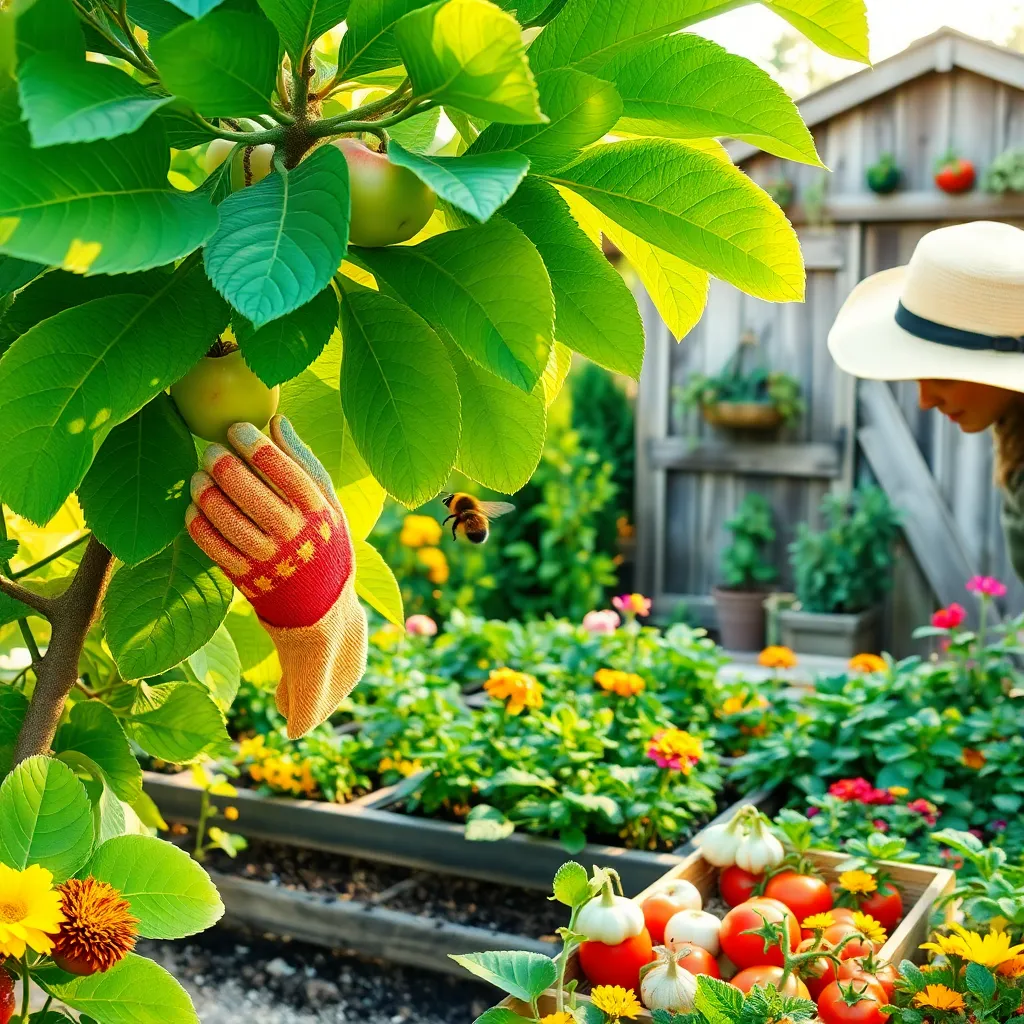
Managing pests and diseases in your fruit garden is crucial for a bountiful harvest. One effective strategy is to regularly inspect plants for signs of infestation, such as discolored leaves or unusual growths.
Encourage natural predators like ladybugs and birds to keep harmful insects in check. Planting flowers such as marigolds and daisies can attract these beneficial allies, creating a natural pest control system.
For fungal diseases, such as powdery mildew, ensure your plants have enough air circulation. Space your fruit trees and bushes appropriately, and consider using a light, organic mulch to help maintain soil moisture without trapping excess humidity.
It’s also important to keep your garden clean by removing fallen leaves and debris that can harbor disease. Compost these materials away from your garden area to prevent the spread of pathogens.
Harvesting and Storing Your Produce
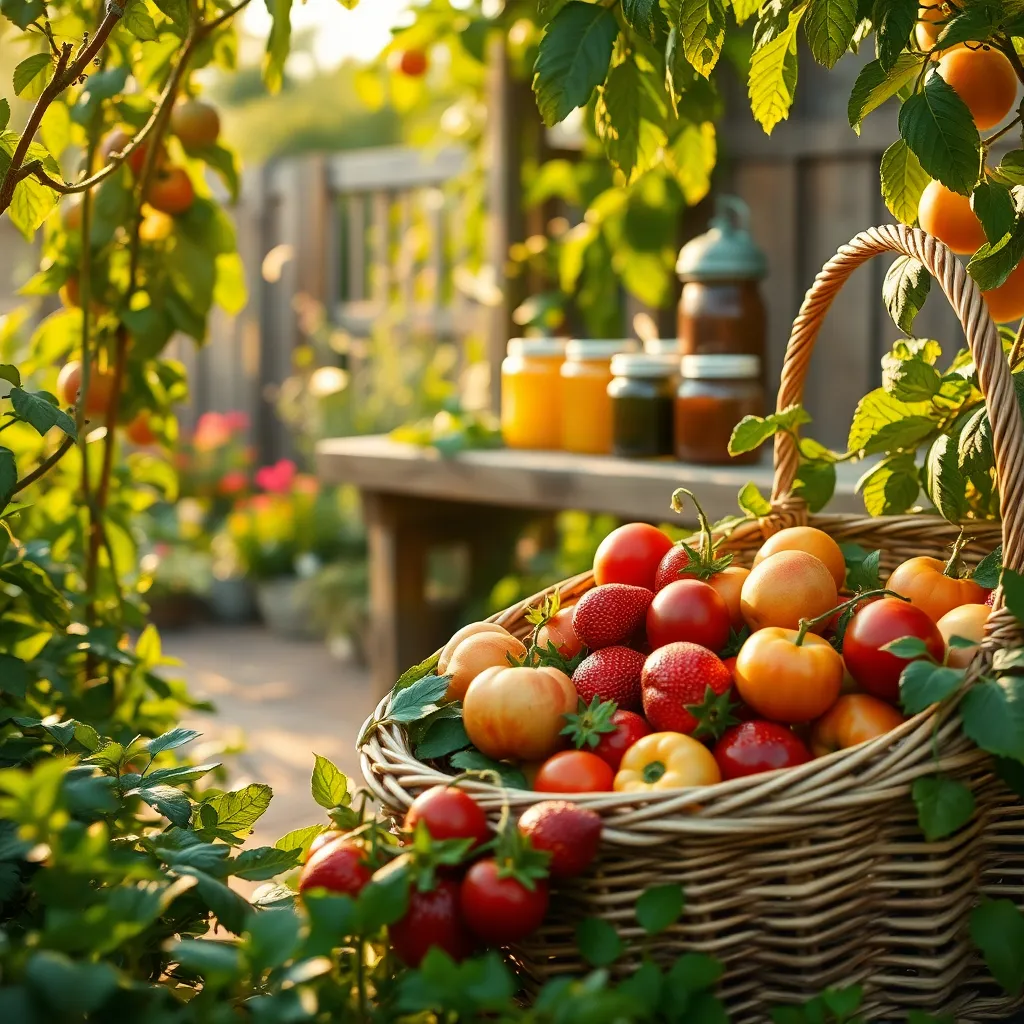
When it comes to harvesting your fruit garden, timing is everything. Pick fruits at their peak ripeness to ensure the best flavor and nutritional value, which often means observing color changes and texture.
Always use clean, sharp tools to harvest your produce to avoid damaging the plants. For softer fruits like berries, use your hands and gently twist to avoid bruising them.
After harvesting, it’s crucial to store your produce correctly to extend its shelf life. Most fruits should be kept in a cool, dry place, but remember that some, like apples and pears, can be stored in a refrigerator to keep them crisper longer.
For advanced gardeners, consider using techniques like canning or freezing to preserve excess produce. These methods not only reduce waste but also allow you to enjoy your garden’s bounty year-round.
Incorporating Exotic Fruits
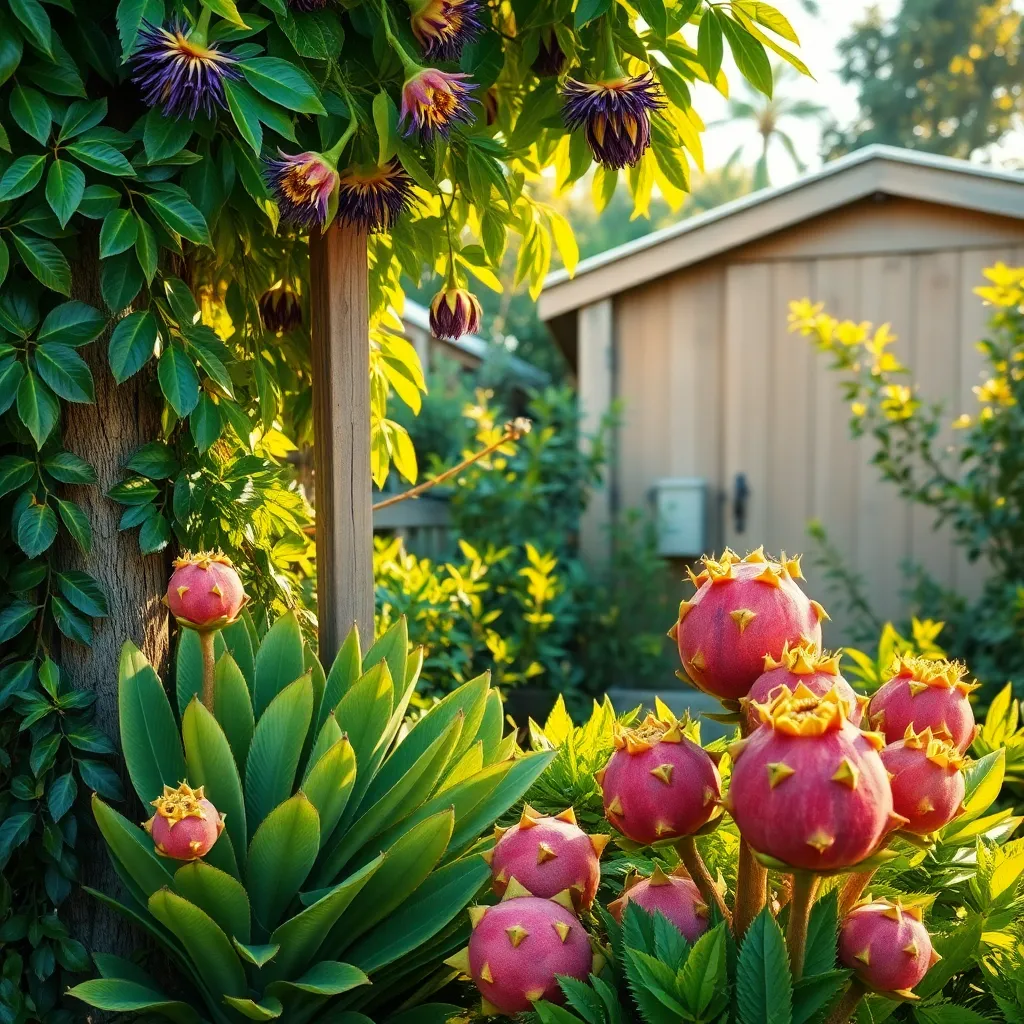
Incorporating exotic fruits into your garden not only enhances its visual appeal but also expands your culinary horizons. Start by selecting fruits that are well-suited to your climate, as this will ensure better growth and yield.
Consider planting dragon fruit, which thrives in warm, sunny climates and needs well-draining soil to prevent root rot. Water it deeply but infrequently, allowing the soil to dry out between watering, which simulates its natural arid environment.
For a unique addition, try growing kiwano (horned melon), which requires a trellis for support due to its vining nature. Ensure it receives full sun and consistent moisture, especially during its growing season, to promote healthy fruit development.
Advanced gardeners may experiment with cherimoya, a fruit that prefers a subtropical climate and slightly acidic soil. Protect young cherimoya trees from frost and provide them with regular, deep watering to support their growth.
Here’s a quick checklist for success with exotic fruits:
- Choose the right fruit for your climate zone.
- Ensure well-draining soil to prevent water-related issues.
- Provide structural support for vining plants.
- Water consistently and appropriately based on the plant’s needs.
Inspiring Community Fruit Gardens
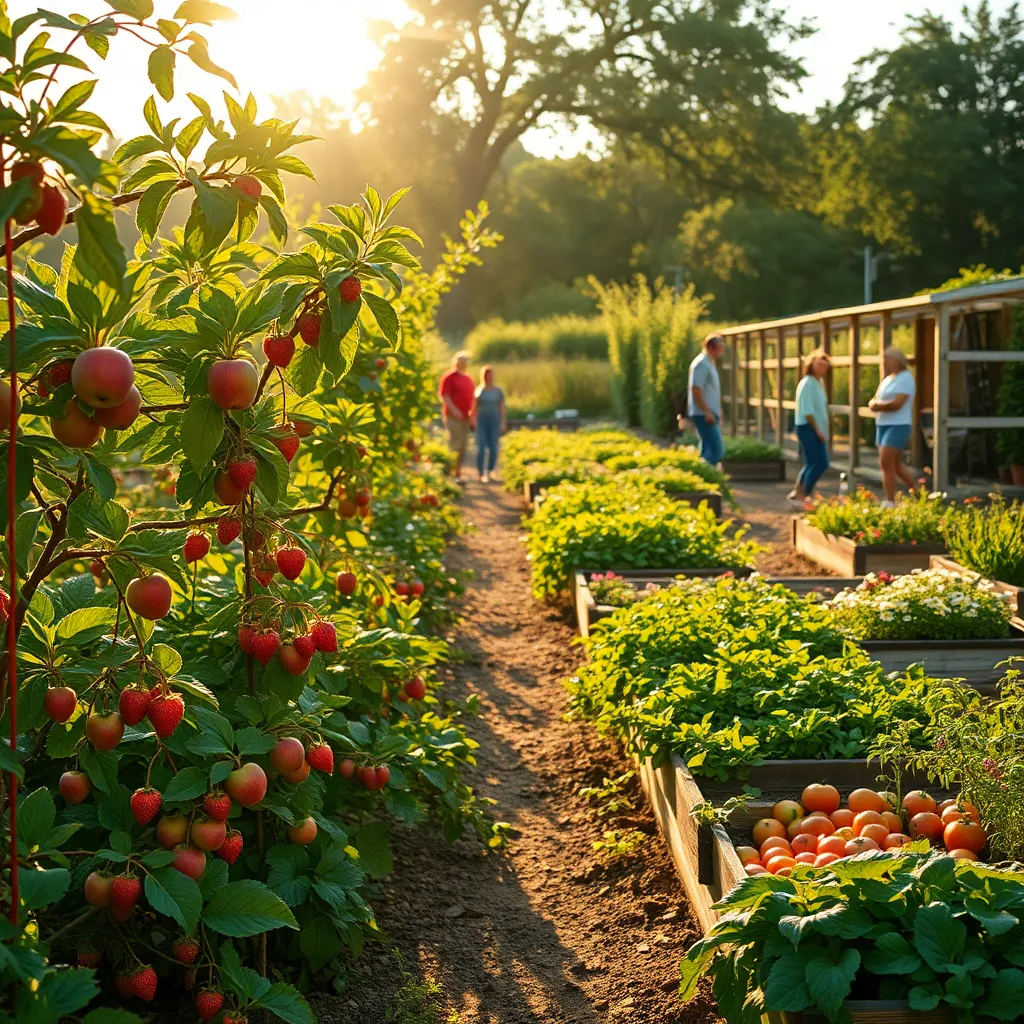
Community fruit gardens are a fantastic way to bring people together while nurturing a shared love for fresh produce. Starting with easy-to-grow fruits like strawberries or raspberries can help beginners gain confidence and enjoy the fruits of their labor quickly.
To ensure a thriving community garden, it’s essential to choose a site with at least six to eight hours of sunlight daily. Soil quality is crucial—consider a pH level between 6.0 and 7.0, and enrich the soil with organic compost to promote healthy growth.
Watering practices can make or break your garden; aim for consistent, deep watering once or twice a week, depending on your climate. Mulching is a great technique to retain moisture and suppress weeds, which is especially useful in a communal setting where maintenance time might be limited.
For those looking to expand their gardening skills, try incorporating fruit trees like apple or pear trees, which require more space and care. Pruning is an essential task for these trees, promoting air circulation and preventing disease, so schedule this in early spring or late winter.
Conclusion: Growing Success with These Plants
In exploring the ’15 Inspiring Fruit Garden Inspirations,’ we’ve delved into essential relationship concepts, each represented by a unique fruit garden metaphor. From nurturing growth like a flourishing apple orchard to embracing change as gracefully as a vine-ripened grape, each concept highlights the importance of communication, patience, and mutual support. We’ve learned that relationships require regular tending, much like a well-maintained garden, allowing them to thrive and bear the sweetest fruit.
As a next step, consider identifying one area in your relationship that needs a little extra care and attention, much like a gardener would tend to a wilting plant. Whether it’s through a heartfelt conversation or a small act of kindness, take action today to cultivate the love and understanding you desire.
Remember, the journey to a fruitful relationship is ongoing, and revisiting these concepts can provide guidance along the way. Be sure to bookmark this article for future reference, so you can return to these insights whenever your relationship needs a fresh burst of inspiration.
Looking ahead, by applying these principles with dedication, you can achieve a thriving relationship filled with joy and resilience. Let your love grow and flourish, just like the most bountiful garden.

